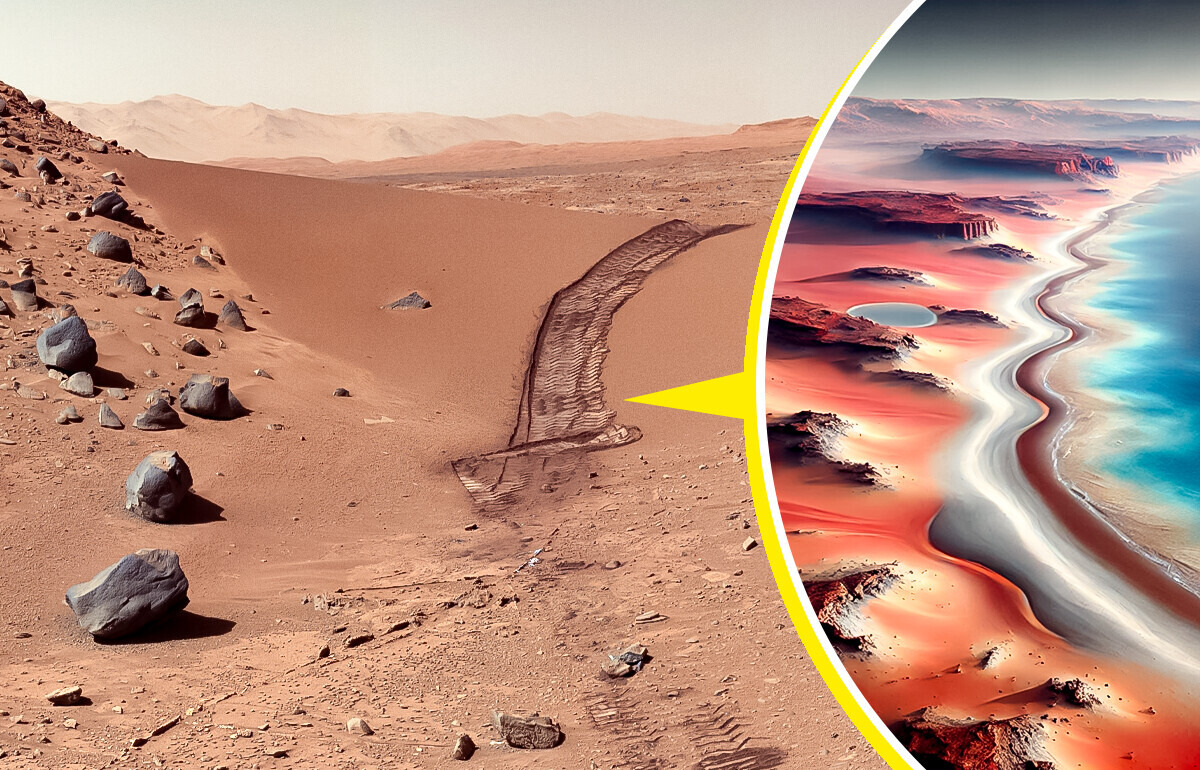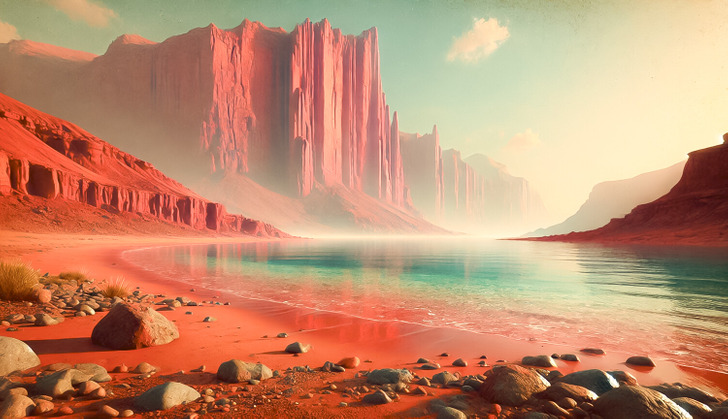Use Your Eagle Eye to Find All the Mistakes in These 11 Images


Many people have long believed that other planets may have supported life in the past, and that Earth might not be the only habitable place in the universe. Thanks to advancements in technology and the ongoing exploration of Mars by rovers, scientists have uncovered a new evidence that could completely reshape our understanding of the planet.
Disclaimer: Some of the images in this article are AI-generated and are intended for illustration purposes only.
Although Mars today appears barren and covered in dust, recent findings suggest that it might have once hosted vast oceans. A groundbreaking study using radar scans has revealed possible signs of a massive northern ocean that existed around 4 billion years ago. This adds compelling support to the theory that Mars once had extensive liquid water systems.
Researchers analyzed radar data from the Zhurong Mars rover, which operated between May 2021 and May 2022 in the southern part of Utopia Planitia. They discovered subsurface geological formations that don’t align with patterns left by lava, wind, or rivers. Instead, these formations are more consistent with those created by wave activity near shorelines.
While previous studies suggested that these deposits had been reworked by water, this study found signs of layered sediments under the surface of Utopia Planitia, patterns that look just like coastal deposits on Earth.

According to Dr. Benjamin Cardenas, an assistant professor of geology at Penn State, this new evidence strongly supports the existence of ancient seas or large lakes on Mars.
“We’re finding places on Mars that used to look like ancient beaches and ancient river deltas,” shared the professor. They also found signs of wind, waves, and plenty of sand, almost like the remains of an old beach you'd visit on vacation.
Cardenas explained that finding signs of water on Mars is vital for understanding whether life could have ever developed there, “When we look back at where the earliest life on Earth developed, it was in the interaction between oceans and land, so this is painting a picture of ancient habitable environments, capable of harboring conditions friendly toward microbial life.”

The study also implies that Mars experienced ongoing wave activity over extended periods. Unlike small lakes with limited movement, this suggests the presence of large bodies of water shaped by tides, waves, and flowing rivers.
“Rivers were flowing, sediment was moving, and land was being built and eroded,” said Cardenas. These kinds of rock layers can show what the land looked like a long time ago, how it changed over time, and where scientists might want to look for signs that life once existed there.
Studies like this always spark excitement online, as people are naturally curious about space and the possibility of life beyond Earth. Some are thrilled by the idea that we might be close to uncovering traces of ancient Martian life, while others are simply fascinated by the science behind it all.
But not everyone is convinced. Skepticism is still common, especially when it comes to Mars’ ability to support life. As one Redditor pointed out, the presence of liquid water doesn’t necessarily mean the planet was habitable. With Mars receiving far less sunlight than Earth and lacking a thick atmosphere rich in greenhouse gases, it’s hard to imagine a functioning water cycle like the one we have here.
Still, it’s the mystery that keeps us looking to the skies, always wondering what else might be out there. People are drawn to the unknown, and it’s part of what makes science so fascinating. Just like the Great Blue Hole has attracted adventurers for decades, driven by curiosity, what they found deep below the surface was as surprising as it was unsettling. Read more here.











